Captivating and personal opening paragraphs. Gives you insight into the authors background. #Broussard
For youthful idealists of my generation, it was easy to believe that the world we were creating online would be better and more just than the world we already had. #Broussard
Fast-forward a few years: I went back to computer science as a data journalist. Data journalism is the practice of finding stories in numbers and using numbers to tell stories. As a data journalist, I write code in order to commit acts of investigative journalism. #Broussard
The way people talk about technology is out of sync with what digital technology actually can do. Ultimately, everything we do with computers comes down to math, and there are fundamental limits to what we can (and should) do with it. We have reached that limit. #Broussard
Americans have hit a point at which we are so enthusiastic about using technology for everything—hiring, driving, paying bills, choosing dates—that we have stopped demanding that our new technology is good. #Broussard
Our collective enthusiasm for applying computer technology to every aspect of life has resulted in a tremendous amount of poorly designed technology. That badly designed technology is getting in the way of everyday life rather than making life easier. #Broussard
When all you have is a hammer, everything looks like a nail. Computers are our hammers. It’s time to stop rushing blindly into the digital future and start making better, more thoughtful decisions about when and why to use technology. #Broussard
Just as there are fundamental limits to what we know in mathematics and in science, so are there fundamental limits to what we can do with technology. #Broussard
Technochauvinism: the belief that tech is always the solution. #Broussard
There has never been, nor will there ever be, a technological innovation that moves us away from the essential problems of human nature. Why, then, do people persist in thinking there’s a sunny technological future just around the corner? #Broussard
Computers have become so pervasive in every aspect of our lives that when something goes awry in the machine, we assume that it’s our fault, rather than assume something went wrong within the thousands of lines of code that make up the average computer program. #Broussard
<- In reality, as any software developer can tell you, the problem is usually in the machine somewhere. It’s probably in poorly designed or tested code, cheap hardware, or a profound misunderstanding of how the actual users would use the system. #Broussard
In thinking about tech, it’s important to keep another cultural touchstone in mind: Hollywood. A great deal of what people dream about making in tech is shaped by the images they see in movies, TV programs, and books. #Broussard
Inside the comsci community, people gave up on general AI in the 1990s. General AI is now called GOFAI. Narrow AI is what we actually have. Narrow AI is purely mathematical. It’s less exciting than GOFAI, but it works well and we can do a variety of interesting things with it.
Machine learning, a popular form of AI, is not GOFAI. Machine learning is narrow AI. The name is confusing. Even to me, the phrase machine learning still suggests there is a sentient being in the computer. #Broussard
The important distinction is this: general AI is what we want, what we hope for, and what we imagine (minus the evil robot overlords of golden age science fiction). Narrow AI is what we have. It’s the difference between dreams and reality. #Broussard
When we rely exclusively on computation for answers to complex social issues, we are relying on artificial unintelligence. #Broussard
Every time a programmer learns a new language, she writes a “Hello, world” program. If you study programming at coding boot camp or at Stanford or at community college or online, you’ll likely be asked to write one. #Broussard
“Hello, world” is a reference to the first program in the iconic 1978 book The C Programming Language by Brian Kernighan and Dennis Ritchie, in which the reader learns how to create a program (using the C programming language) to print “Hello, world.” #Broussard
Ultimately, data always comes down to people counting things. If we don’t think too hard about it, we might imagine that data springs into the world fully formed from the head of Zeus. #Broussard
Data generated by computers is ultimately socially constructed because people make computers. Math is a system of symbols entirely created by people. Computers are machines that compute: they perform millions of mathematical calculations. #Broussard
Computers are not built according to any kind of absolute universal or natural principles; they are machines that result from millions of small, intentional design decisions made by people who work in specific organizational contexts. ->
#Broussard
#Broussard
Our understanding of data, and the computers that generate and process data, must be informed by an understanding of the social and technical context that allows people to make the computers that make the data. #Broussard
Programming can be both an art and a craft. For programming as a craft, you can apprentice and learn and earn a decent living. Programming as an art requires craftsmanship plus training in advanced mathematics. #Broussard
Although we like to credit individuals for technological innovations, rarely is it the case that a lone inventor created any modern computational innovations. When you look closely, there’s always a logical predecessor & a team of people who worked on the idea for months or yrs.
[steve] Jobs paid for a tour of Xerox PARC, saw the idea of a GUI, and licensed it. #Broussard
The cloud is a wonderful metaphor, but practically speaking, the cloud just means “a different computer, probably located with thousands of other computers in a large warehouse in the tristate area.”
#Broussard
#Broussard
Technochauvinists like to believe that computers do a better job than people at most tasks. Because the computer operates based on mathematical logic, they think that this logic translates well to the offline world. ->
#Broussard
#Broussard
<- They are right about one thing: when it comes to calculating, computers do a far better job than people alone. Anyone who has ever graded a student math paper will happily admit that. But there are limits to what a computer can do in certain situations. #Broussard
Missing here is a complete vision of what a world w functioning tacocopters would be like. What would it mean to design buildings & urban envt to enable drones instead of humans? How would access to light & air change if windows became docking stations for food delivery vehicles?
<- What might be the social costs of eradicating even that most mundane and insignificant of interactions—a bag of food being passed from one human hand to another? Do we really want to say “Hello, world” to that reality? #Broussard
To most people, the phrase artificial intelligence suggests something cinematic—maybe Commander Data, the lifelike cyborg from Star Trek: The Next Generation; Hal 9000 from 2001; or Samantha, the AI system from the movie Her;
or Jarvis,... those ARE imaginary.
#Broussard
or Jarvis,... those ARE imaginary.
#Broussard
It’s easy to confuse what we imagine and what is real—especially when we want something very badly. Many people want AI to be real. This usually takes the form of wanting a robot butler to attend to your every need. #Broussard
<- A disproportionate number of the people who make tech fall into the camp of desperately wanting Hollywood robots to be real. When Facebook’s Mark Zuckerberg built an AI-based home automation system, he named it Jarvis. #Broussard
General AI is the Hollywood kind of AI... Narrow AI is different: it’s a mathematical method for prediction. There’s a lot of confusion between the two, even among people who make technological systems. Narrow AI is statistics on steroids. #Broussard
Ever since Alan Turing’s 1950 paper that proposed the Turing test for machines that think, computer scientists have used chess as a marker for “intelligence” in machines. Half a century has been spent trying to make a machine that could beat a human chess master. ->
#Broussard
#Broussard
Deep Blue defeated Kasparov in 1997. AlphaGo, the AI program that won 3 of 3 games against Ke Jie in 2017, is often cited as eg. of a program that proves general AI is just a few years in the future. Closer look at the program & its cultural context reveals a d/t story, however.
The programmers used 30 million games to “train” the model that they named AlphaGo. Remember, people who play Go professionally spend ages playing Computer Go. It’s how they train. Therefore, the 30 million games recorded included data from the world’s greatest Go players. ->
<- Millions of hours of human labor went into creating the training data—yet most versions of the AlphaGo story focus on the magic of the algorithms, not the humans who invisibly and over the course of years worked (without compensation) to create the training data. #Broussard
By layering a variety of computational methods and always choosing the move with the greatest probability of success, the designers created a program that defeated the world’s
greatest Go players. #Broussard
greatest Go players. #Broussard
Is AlphaGo smart? Its designers certainly are. They solved a math problem that was so hard that it took decades of great minds to work on it. #Broussard
AlphaGo is a remarkable mathematical achievement that was made possible by equally remarkable advances in computing hardware and software. AlphaGo’s team of designers deserves praise for this outstanding technical achievement. AlphaGo is not an intelligent machine, however.
AlphaGo does only one thing: plays a computer game. It contains data from 30 million games played by amateurs & world’s most talented players. On some level, AlphaGo is supremely dumb. It uses brute force and the combined effort of many, many humans to defeat a single Go master.
Amazon’s Alexa and other voice-response interfaces don’t understand language. They simply launch computerized sequences in response to sonic sequences, which humans call verbal commands. #Broussard
Alexa is the trigger word that tells the computer that a command is coming. Play is a trigger word that
means “retrieve an MP3 from memory and send the command play to a previously specified audio player, along with the MP3 file name.” ->
#Broussard
means “retrieve an MP3 from memory and send the command play to a previously specified audio player, along with the MP3 file name.” ->
#Broussard
<- The interface is also programmed to capture whatever word comes after play and before the pause (the end of the command). That value is put into a variable such as songname, which is retrieved from memory and fed to the audio player. #Broussard
In this book we’ll stay squarely in the realm of reality: the world in which we have unintelligent computing machines that we call intelligent machines. + we’ll look at how imagination—which is powerful & exciting—sometimes confuses the way we talk about computers, data, & tech.
I’d also ask you not to be disappointed... when you come up against what a colleague calls the ghost-in-the machine fallacy—the reality that there is no little person or simulated brain inside the computer. #Broussard
There are different ways to react to this news: you can be sad that the thing you dreamed of is not possible—or you can be excited and embrace what is possible when artificial devices (computers) work in sync with truly intelligent beings (humans). I prefer the latter approach.
Every field has taken a computational turn. We now have computational social science, computational biology, computational chemistry, or digital humanities; visual artists use languages like Processing to create multimedia art...
#Broussard
#Broussard
However, as life has become more computational, people haven’t changed. Just b\se we have open government data doesn’t mean we don’t have corruption. The tech-facilitated gig economy has exactly the same problems as labor markets have had since beginning of the industrial age.
Traditionally, journalists have investigated these types of social problems to create positive social change. In the computational world, the practice of investigative journalism has had to go high tech. #Broussard
The Stanford journalists and all of the other journalists found that people of color were stopped far more often than white people in every state. #DataJournalism #Broussard
When you believe that a decision generated by a computer is better or fairer than a decision generated by a human, you stop questioning the validity of the inputs to the system.
#Broussard
#Broussard
t’s easy to forget the principle of garbage in, garbage out—especially if you really want the computer to be correct. It’s important to question whether these algorithms, and the people who make them, are making the world better or worse. #Broussard
As the Internet grew & new digital tools emerged, computer-assisted reporting evolved into what we now call data journalism, which encompasses visual journalism, computational journalism, mapping, data analysis, bot making, & algorithmic accountability reporting. #Broussard
Using a journalist’s skepticism about what can go wrong can help us move from blind technological optimism to a more reasonable, balanced perspective on how to live lives that are enhanced but not threatened or compromised by technology. #Broussard
Chapter 5. Why Poor Schools Can’t Win at Standardized Tests #Broussard
Machines, code, & data can all work together to produce amazing, exciting insights. Getting hold of the right numbers can increase revenue, improve decision making, or help you find a mate—or so the thinking goes. The gospel of data is particularly fervent in the education world.
It is naive to believe that data alone can solve social problems. I learned this when I tried to use big data to help repair my local public schools. ->
#Broussard
#Broussard
<- I failed—and the reasons why I failed have everything to do with why the current technocratic American system of standardized testing will never succeed. #Broussard
Standardized tests are not based on general knowledge. As I learned during my investigation, they are based on specific knowledge contained in specific sets of books: the textbooks created by the test makers.
#Broussard
#Broussard
All of this this is tied up with the economics of testing. Across the nation, standardized tests come from one of three companies: CTB/McGraw-Hill, Houghton Mifflin Harcourt (HMH), or Pearson. ->
#Broussard
#Broussard
<- These corporations write the tests, grade the tests, and publish the books that students use to prepare for the tests. HMH had a 38 percent market share, according to its press materials. In 2013, the company brought in $1.38 billion in revenue. #Broussard
Put simply, any teacher who wants his or her students to pass the tests must use books from the big three textbook publishers. #Broussard
Once I realized the direct connection between textbooks & standardized-test success, I tried to find out exactly how many Philadelphia schools were missing books from the big three publishers. I was also curious how much money it would take to make up for the shortfall #Broussard
The case of the school standards failure nationwide is an illustration of what happens when engineering solutions are applied to social problems. #Broussard
These formal engineering solutions can become so complex and time-consuming and data-driven that the quest for data or better technology obscures the social issues that are at stake. #Broussard
Engineering solutions are ultimately mathematical solutions. Math works beautifully on well-defined problems in well-defined situations with well defined parameters. School is the opposite of well-defined. School is one of the most gorgeously complex systems humankind has built.
I go into my classroom every day & leave surprised by what has transpired. My students have endlessly complex lives. They have other deadlines, family drama, travel plans. Occasionally, they must meet the demands of their own children. It’s an unpredictable environment #Broussard
A technochauvinist might look at this problem and suggest solving it with technology. We could make all the books available electronically and have the students access the books on their phones, because all students have phones. WRONG! #Broussard
You want to replace books with laptops? You might be doing more harm that good unless you have these contingent issues covered in advance. #edtech #edtechknow #Broussard
Given all of this, it seems cheaper—and easier—to just use books. #Broussard
End of Chapter 5. Why Poor Schools Can’t Win at Standardized Tests #Broussard
Chapter 6. People Problems #Broussard
It may seem like ideas about education & tech stem from many d/t authors & thinkers, but digging deep reveals that most such ideas come from a single small group of elites who have been imagining & misunderstanding the interplay between technology & social issues since the 1950s.
<- Understanding the deep connections these people have to each other can help us push back against too-simple, dysfunctional thinking about technology. #Broussard
Because there has historically been very little diversity among the people who make computer systems, there are beliefs embedded in the design and concept of technological systems that we would be better off rethinking and revising. #Broussard
You make a flying spy robot that emits an annoying noise, and you make virtually no rules or establish any guidance or social norms about using the robot or its video camera. Did you think about what possibly could go wrong? #Broussard
Blind optimism about technology and an abundant lack of caution about how new technologies will be used are the hallmarks of technochauvinism. #Broussard https://twitter.com/Abebab/status/1243867121324613633?s=20">https://twitter.com/Abebab/st...
The story of how tech creators ended up with a reckless disregard for public safety and the public good starts with tech titan, Marvin Minsky. Minsky, a Harvard and Andover and Princeton grad, was an MIT professor and is usually considered the father of artificial intelligence.
Look behind the scenes at the creation of virtually any high-profile tech project between 1945 and 2016, and you’ll find Minsky (or his work) somewhere in the cast of characters. #Broussard
This obsessive attention to detail and insatiable desire to build things turned out to be exactly the right characteristics needed to write computer programs and build hardware. Minsky’s lab flourished. #Broussard
The hacker ethic is also what inspired Mark Zuckerberg’s first Facebook motto: “Move fast and break things.” Minsky was part of Zuckerberg’s curriculum at Harvard. #Broussard
A large pile of money, some endlessly creative mathematicians with speculative ideas of the future: this was how the field of AI began. Eventually, Minsky’s small, elite circle came to dominate the tech conversation in academia, industry, & even Hollywood. #Broussard
The world of tech, which now rules all aspect of society, really is rooted in a small circle of white men. (my phrasing)
This attitude, that creating mattered more than convention (or laws), was what people of Minsky’s generation passed on to their students. ->
#Broussard
#Broussard
<- It shows up later in the behavior of tech CEOs like Travis Kalanick, who in 2017 was ousted from his top position at Uber for (among other things) creating a culture of sexual harassment. #Broussard
[Kalanick] launched Uber in cities worldwide in defiance of local taxi regulations, created a program (Greyball) to help Uber evade sting operations by law enforcement, was captured on camera verbally abusing Uber driver & looked the other way when Uber drivers raped passengers.
Disregard for social convention goes back farther than Minsky, back to computing pioneer Alan Turing, who, like Minsky, did his graduate work at Princeton. #Broussard
This attitude forms the philosophical basis of technochauvinism, in which efficient code is prioritized above human interactions. #Broussard
Tech also inherited mathematicians’ worship of the cult of genius. This cult of genius has led to much mythologizing; it also enforces the boundaries of the industry and camouflages a range of structural discrimination. #Broussard
Minsky’s intellectual “ancestry” can be traced in an unbroken line all the way back to Gottfried Leibniz in 1693. To understand why this matters, we need to walk through the development of the modern-day computer. #Broussard
Whether they realized it consciously or not, nineteenth-century mathematicians and other scientists had a choice. One option was to enact social change... Another option was to settle for the status quo and build machines that could do the work.
They built machines. #Broussard
They built machines. #Broussard
This history demonstrates just how deep this particular strain of white, male bias in tech goes. When faced with the option of bringing more, d/nt people into the workforce, 19th-c mathematicians & engineers chose instead to build machines that replaced people—at enormous profit.
As wonderfully creative as Minsky and his cohort were, they also solidified the culture of tech as a billionaire boys’ club. Math, physics, and the other “hard” sciences have never been hospitable to women and people of color; tech followed this lead. #Broussard
Reading about Silicon Valley billionaires’ desires to live to age two hundred or talk with little green men, it’s tempting to ask: Were you high when you thought of that? Often, the answer is yes. #Broussard
Then came Peter Thiel. (the most despicable person tech has to offer - my phrasing. More on Thiel in this thread https://twitter.com/Abebab/status/1231600988261404673?s=20)">https://twitter.com/Abebab/st...
We shouldn’t rush to be governed by computational systems designed by people who don’t care about or understand the cultural systems in which we are all embedded. #Broussard
The way that white male bias interacts with the genius myth inside STEM fields is even more pernicious. Even today, women and people of color are rarely considered math or tech geniuses. #Broussard
Across the academic spectrum, women are underrepresented in fields whose practitioners believe that raw, innate talent is the main requirement for success, because women are stereotyped as not possessing such talent. Same goes to African Americans, subject to similar stereotypes.
End of Chapter 6 - People Problems #Broussard
Chapter 7 - Machine Learning: The DL on ML #Broussard
In order to create a more just technological world, we need more diverse voices at the table when we create technology.
#Broussard
#Broussard
<- To do this, we need to employ conventional solutions like reducing barriers to entry and addressing the “leaky pipeline” issues that make mid-career professionals drop out or stall on their way to the top.
#Broussard
#Broussard
<- We also need to add an unconventional solution: we need to add nuance to the way we talk about all things digital. This is easier said than done. #Broussard
Social problems arise from situations in which people misjudge how suitable a computer is for performing the task. ->
#Broussard
#Broussard
The classic example of a thing that is very simple for people but very complex for computers is navigating a room with toys all over the floor. The average toddler can navigate a room without stepping on toys (though of course she might not choose to do so). A robot can’t.
<- To get the robot to navigate the toy-strewn floor, we would have to program in all of the information about the toys and their exact dimensions and have the robot calculate a path around the toys. #Broussard
There are also predictable pitfalls to the robot method, as people who own both Roomba robotic vacuum cleaners and pets have discovered. When a pet leaves something disgusting on the floor, the Roomba will smear it all over the house. #Broussard
I can use a euphemism to talk about the disgusting things that pets do because everyday language allows us to refer to things without using precise words. If I say that my dog is adorable, but also gross, you will understand. #Broussard
<- There are no such euphemisms in mathematical language. In mathematical language, everything is highly precise. Part of the communication problem that exists in computational culture derives from the imprecision of everyday language and the precision of mathematical language.
[Machine learning] doesn’t mean that the machine acquires knowledge or wisdom or agency, despite what the term learning might imply. This type of linguistic confusion is at the root of many misconceptions about computers. #Broussard

 Read on Twitter
Read on Twitter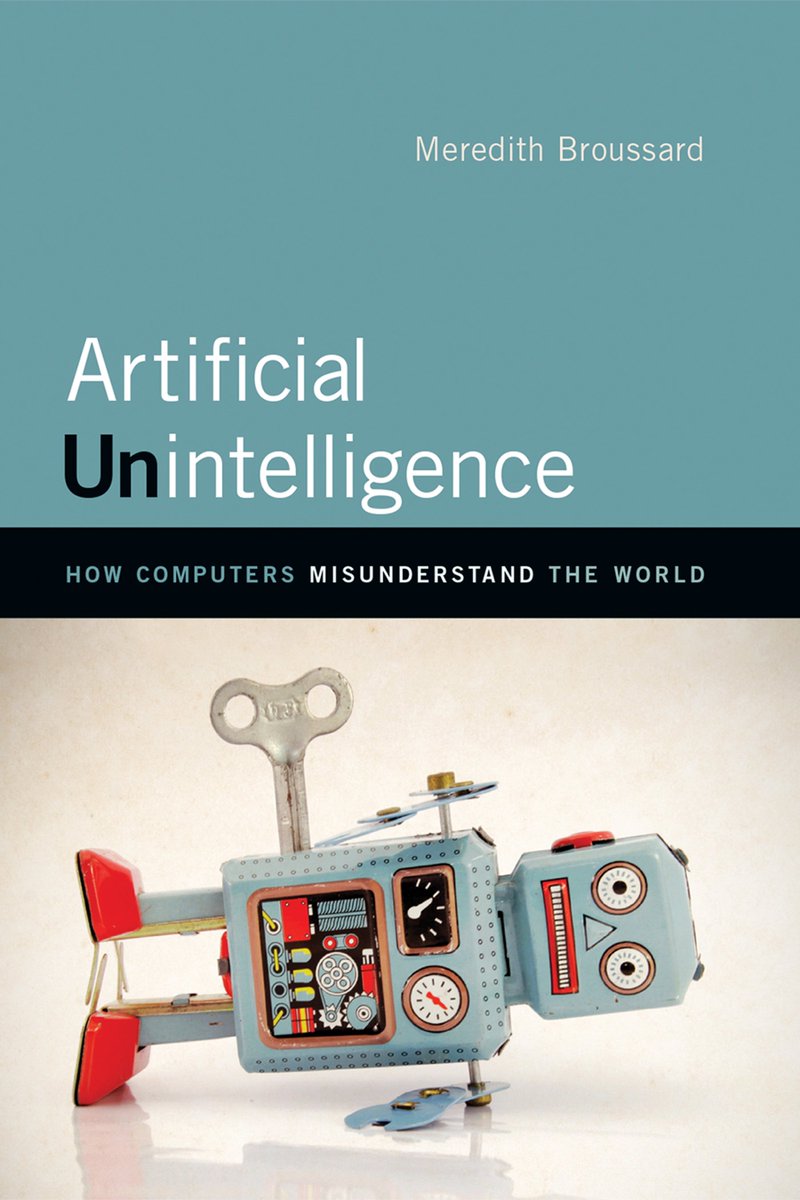

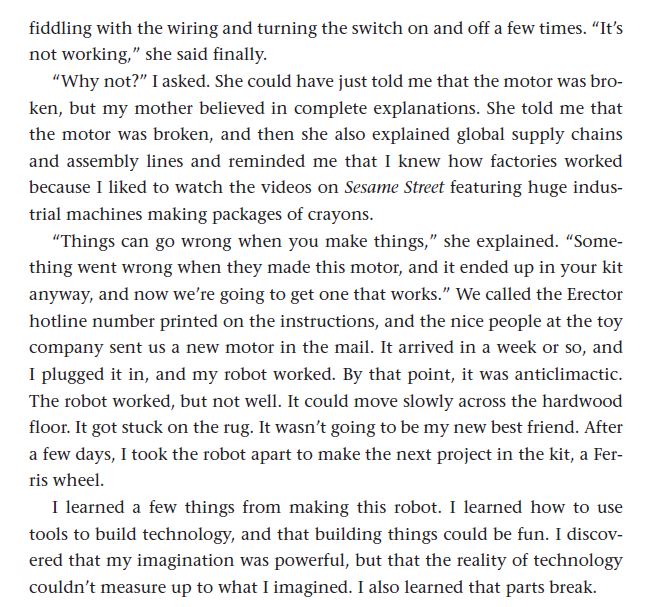

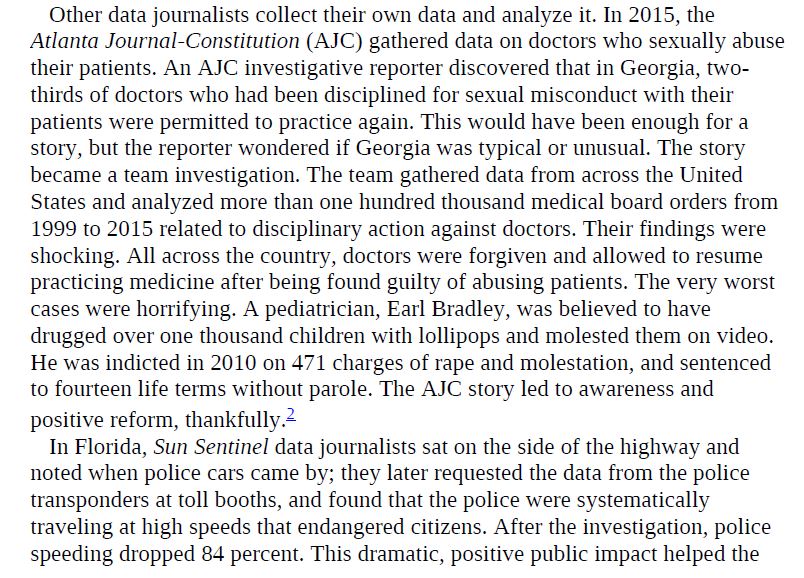

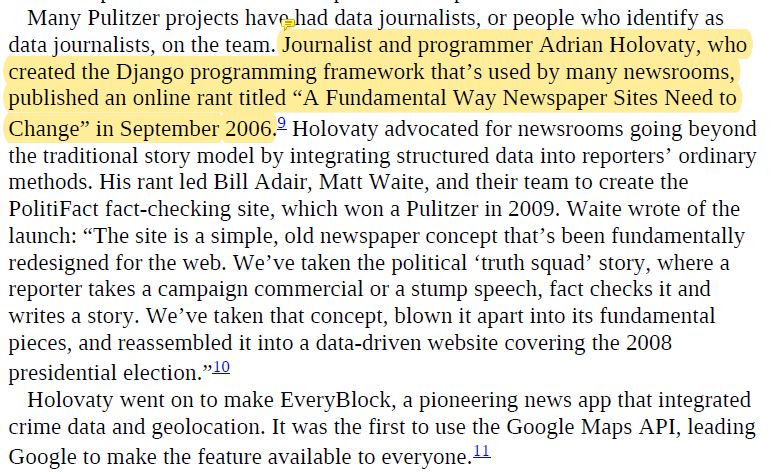

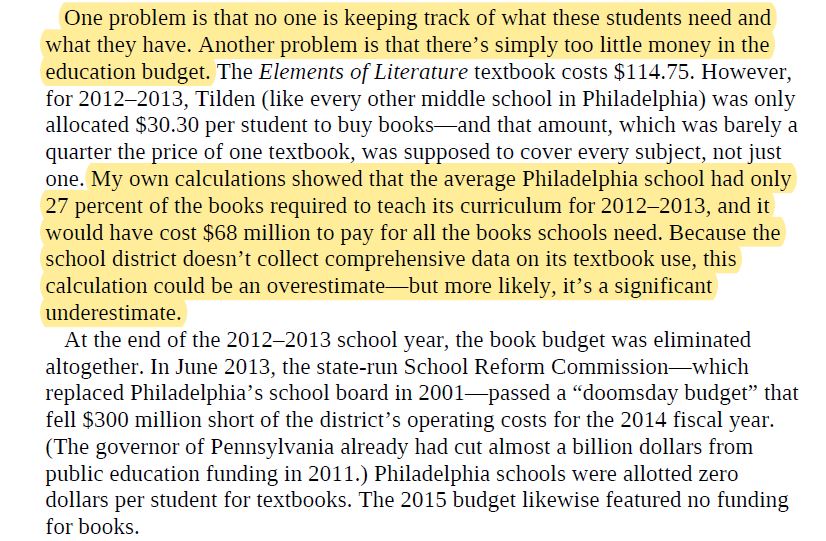
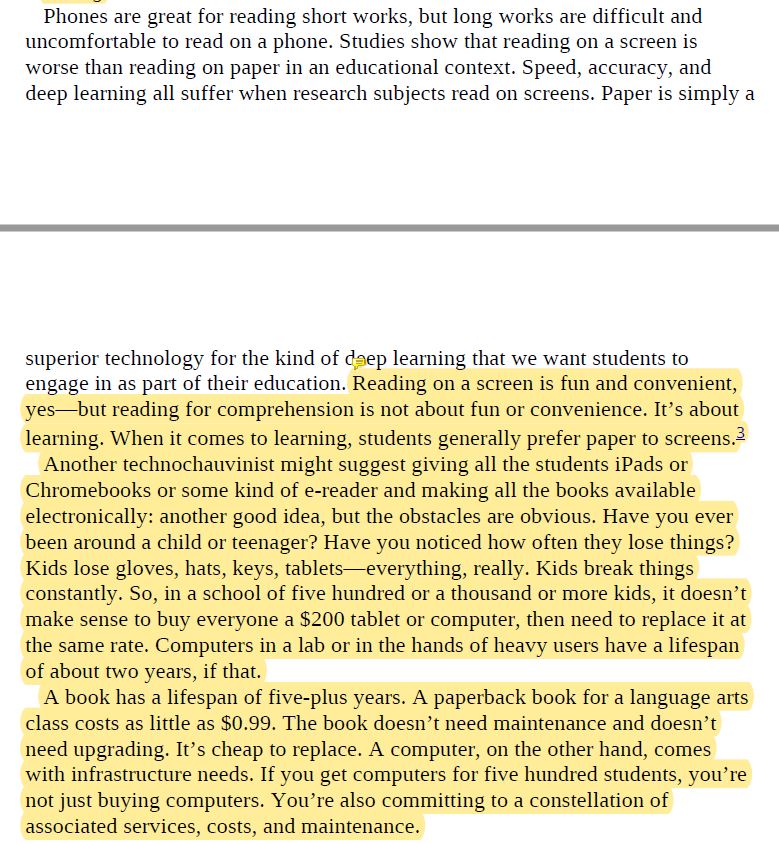


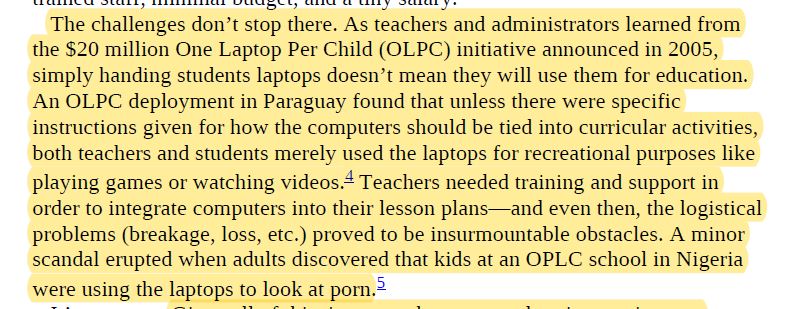
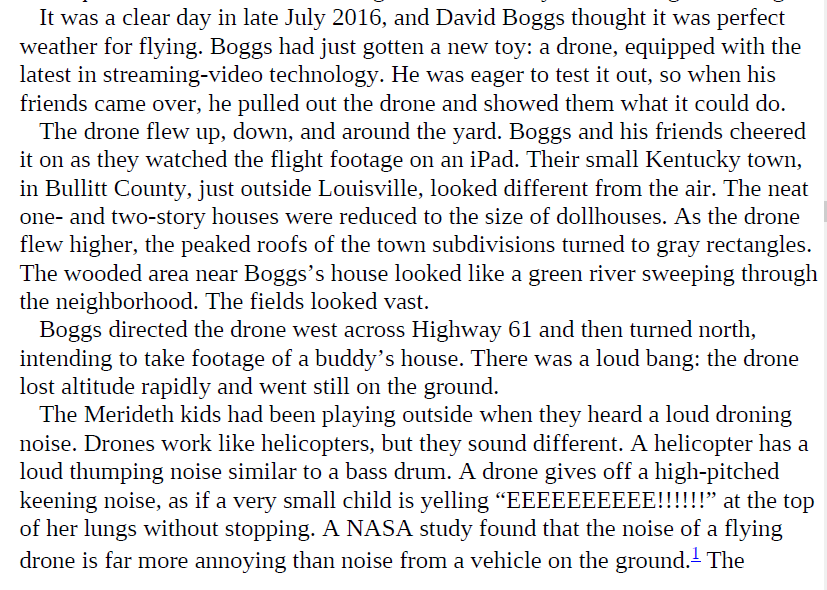


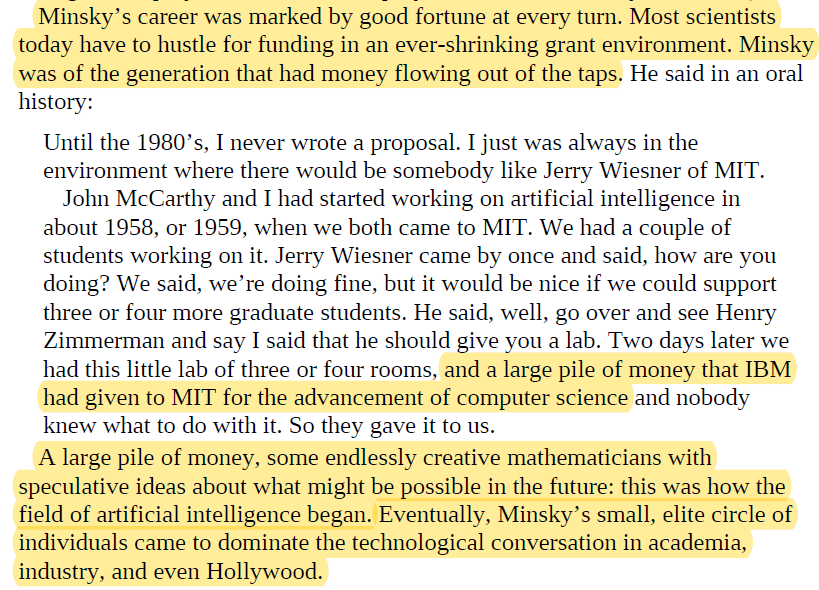
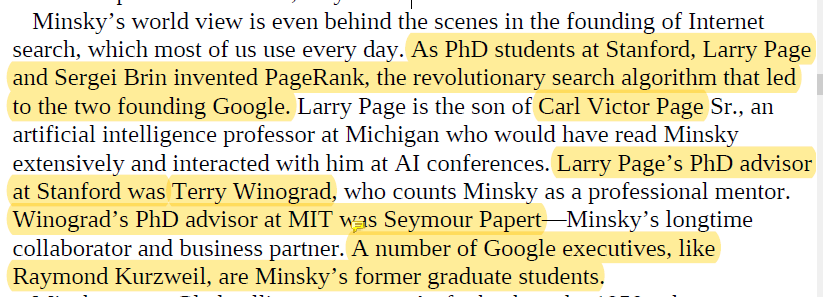
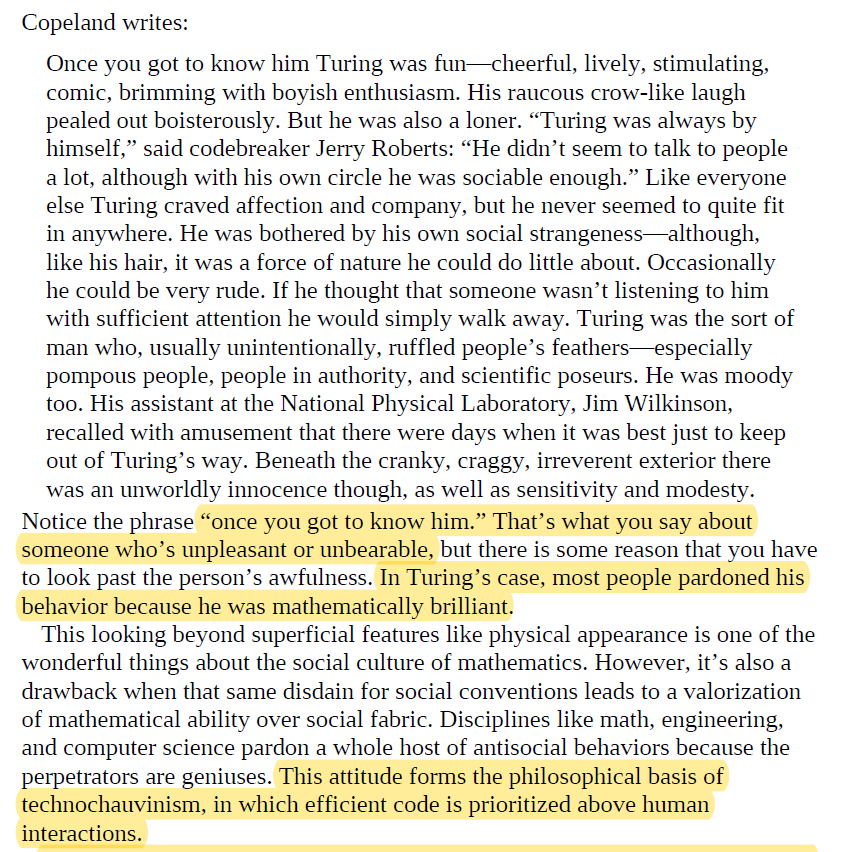
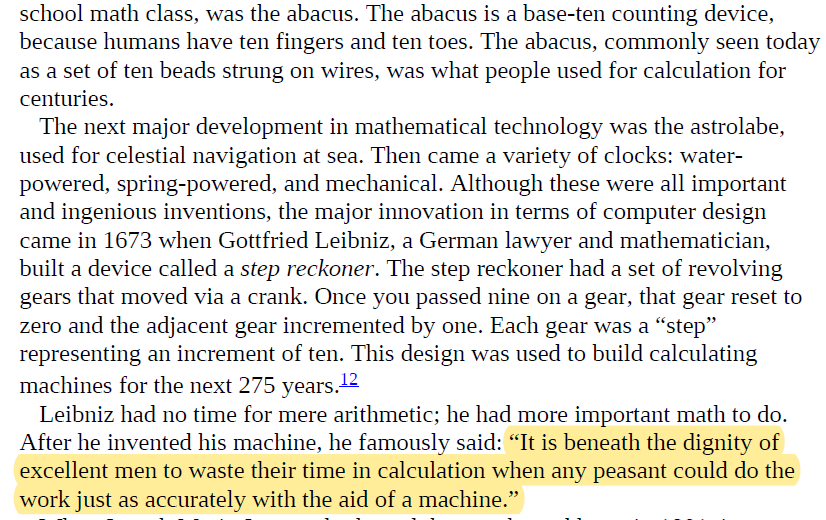
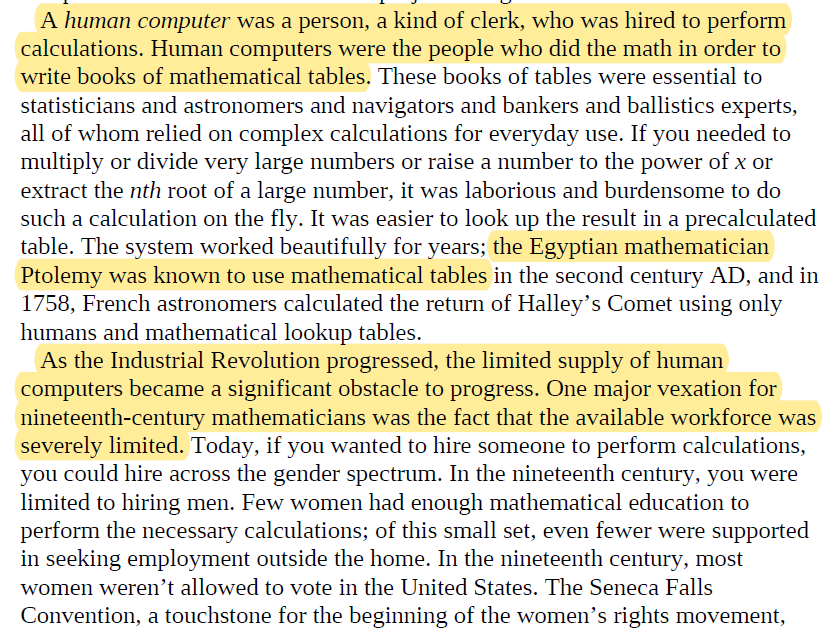
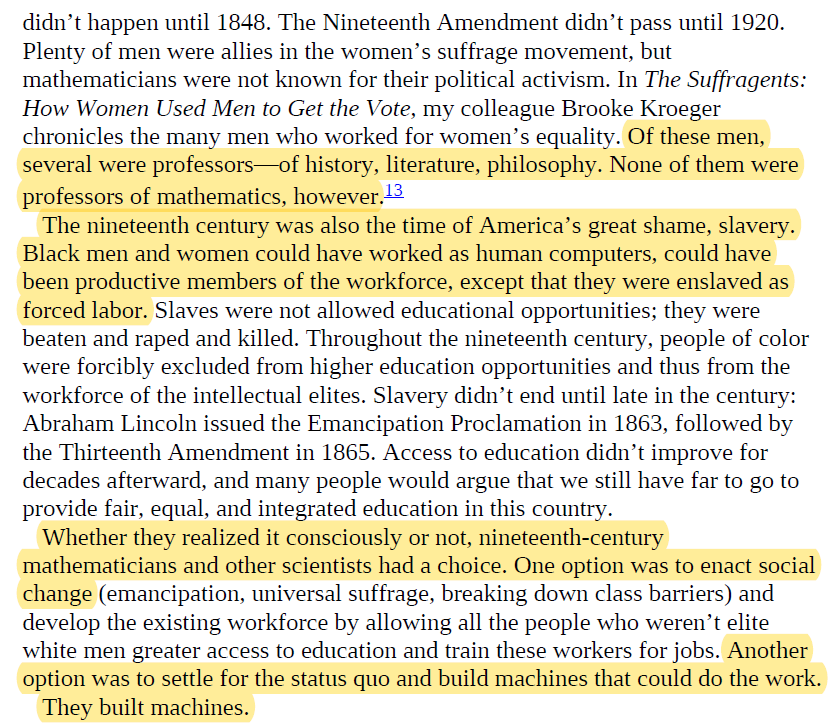



![[Machine learning] doesn’t mean that the machine acquires knowledge or wisdom or agency, despite what the term learning might imply. This type of linguistic confusion is at the root of many misconceptions about computers. #Broussard [Machine learning] doesn’t mean that the machine acquires knowledge or wisdom or agency, despite what the term learning might imply. This type of linguistic confusion is at the root of many misconceptions about computers. #Broussard](https://pbs.twimg.com/media/EWcRxqyXYAAKEM1.png)


